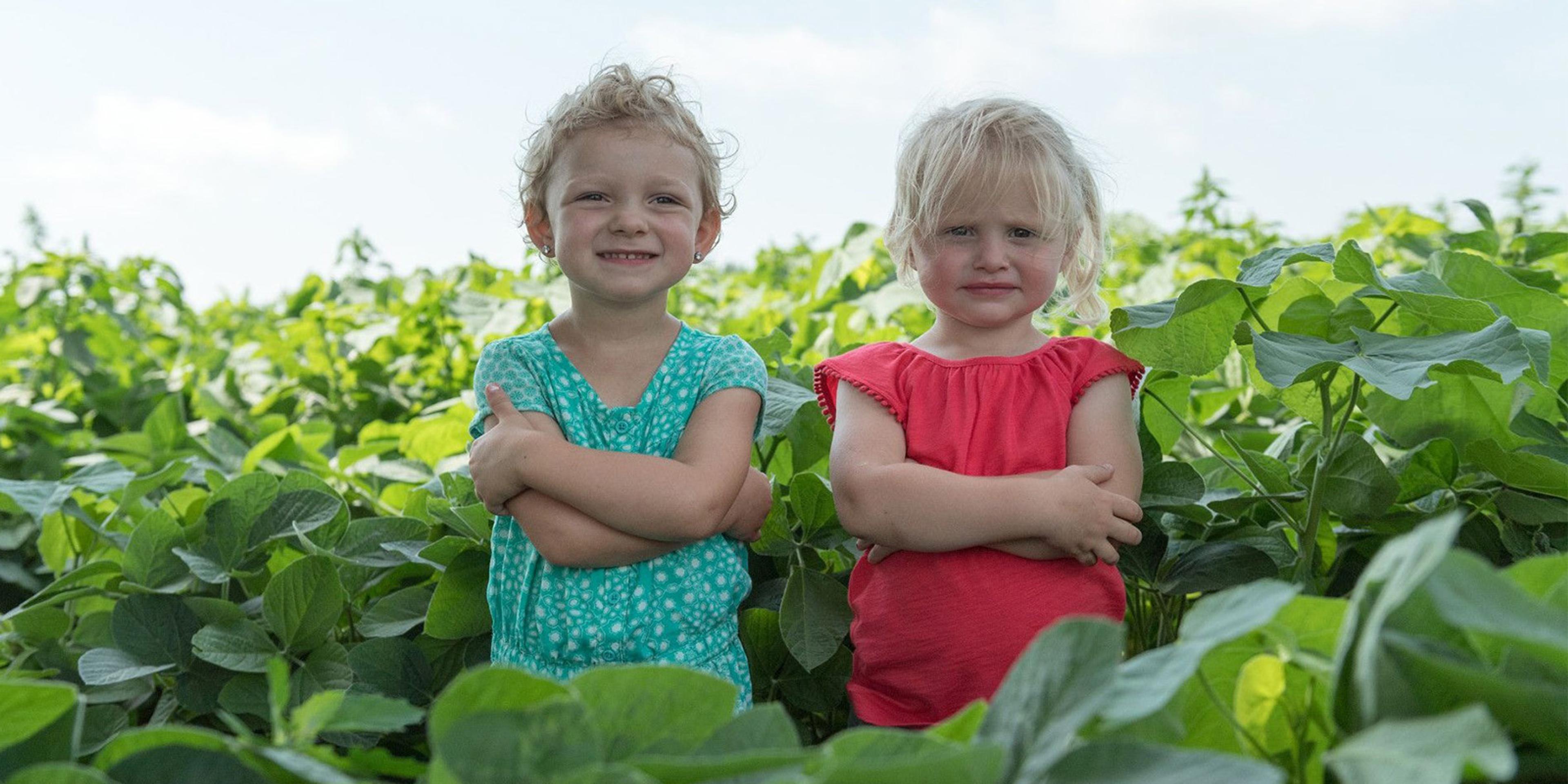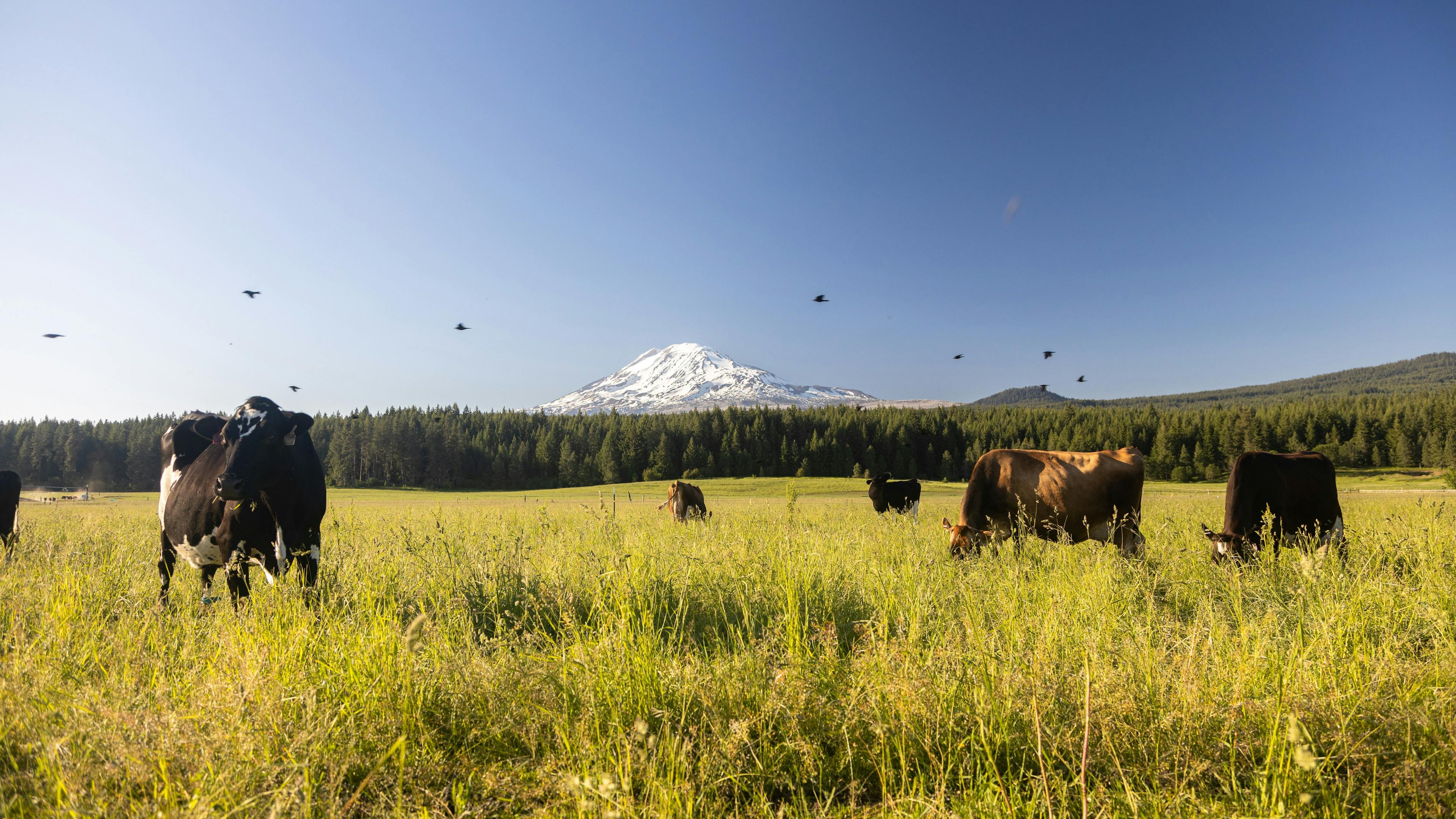
Organic
Census Numbers Are In: What Percentage of Agriculture Is Organic?
More and more consumers are investing in organic products and the landscape of organic food production continues to evolve. This was made apparent last month when the USDA National Agricultural Statistics Service (NASS) released the results of the 2022 Census of Agriculture. As a cooperative dedicated to protecting where your food comes from, Organic Valley was eager to dive into the numbers.
Let’s take a look at a few of the things the census results tell us about organic agriculture in America.
What is the USDA Agriculture Census?
The USDA conducts an agricultural census every five years. By law, all ag producers must fill out the ag census. The census can tell us lots about the number of farms, how big they are, the amount of each kind of livestock and crops farmers are raising, how much money farmers are making, who’s becoming farmers and more. The last time the USDA conducted this ag census was in 2017, and the most recent data comes from 2022 (it was released this year).
USDA Agriculture Census vs. USDA Certified Organic Survey — What’s the Difference?
While the USDA Agriculture Census covers United States agriculture as a whole, the USDA Certified Organic Survey focuses on information about certified organic farms. The USDA Certified Organic Survey is also taken every few years, but not on a regular schedule. The latest USDA Certified Organic Survey information is from 2021. We can see a bigger picture of what’s going on with organic farming in America by looking at the census and the survey together.

The Turner family of Maine joined Organic Valley in 2022.
Number of Organic Farms in the U.S.
The latest census shows that the number of organic farms was down 4.7%, at 17,321, from the previous Census of Agriculture.
And it’s not just the number of organic farms that has decreased — it’s the number of farms as a whole. Between 2017 and 2022, the total number of farm acres (both certified organic and not organic) decreased significantly. The census shows 880 million acres of farmland, which represents a loss of over 20 million acres within just five years. The 2021 organic survey also shows us that between 2019 and 2021, the number of certified organic farms increased by 5% and the number of certified organic farmland acres decreased by 11%.
How Many Organic Dairy Farms Are There in the U.S.?
According to the census, there are 23,153 dairy farms in the United States — both organic and traditional. The USDA organic survey revealed that there were 2,528 certified organic dairy farms in the United States in 2021. Approximately 57% of these farms are owned by Organic Valley farmer-members.
How Many Organic Dairy Cows Are There in the U.S.?
According to the USDA organic survey, there were approximately 352,000 organic milk cows in the United States in 2021. These cows produced a whopping 5.2 billion gallons of organic milk in a year!
Organic Valley started with organic produce and pooled our crops to sell in local communities. Before a year had passed, we started selling organic dairy. Of our cooperative’s more than 1,600 organic farms, about 1,400 are dairy farms.
How Many Organic Egg Farms Are There in the U.S.?
In 2021, about 1,170 farms were dedicated to housing chickens for organic eggs. These organic chickens produced 544.5 million cartons of a dozen eggs.
Along with dairy, produce, grain and meat, Organic Valley offers a selection of premium eggs. Check out the process and care it takes for an egg to get from an Organic Valley henhouse to your refrigerator here.

The Glick family is Organic Valley farmer-members in Pennsylvania.
How Many Organic Acres of Farms Are There in the U.S.?
The 2021 survey recorded 4.9 million acres of certified organic land in the United States. Of this land, about 1.3 million acres were pastureland and 3.6 million acres were cropland. Organic Valley has over 460,000 organic acres and has kept 540 million pounds of chemicals off the land since 1988.
Where Organic Food Comes From
While there are certified organic farms all over the country, certain states account for more organic sales than others. California comes in first, accounting for 39% of total U.S. organic sales and 18% of the total organic farms in 2022. In the 2021 Certified Organic Survey, it shows that 10 states accounted for about 75% of certified organic sales in 2021: California, Washington, Pennsylvania, Texas, Oregon, New York, Wisconsin, North Carolina, Michigan and Colorado. The data from the 2022 census showed that these states are still where most organic product sales are coming from.
Number of Farms Transitioning to Organic
The total number of farms in the U.S. has decreased by 7% since 2017, now standing at approximately 1.9 million farms and ranches. But the good news is that more farms are transitioning to organic! The 2022 census shows that there were over 2,000 farms with acreage transitioning to organic in 2022. So, while the overall number of farms has decreased, more farms are starting to follow organic standards.
This is great news for the future of organic agriculture because it means it’s expanding! California again comes first in the number of acres transitioning to USDA National Organic Program organic production, at 272 acres in 2022.
In 2023, 84 farms joined our cooperative and we look forward to more this year.
Total Organic Product Sales
One of the biggest areas of growth in organic agriculture shown in the 2022 USDA farm census was in the total U.S. organic product sales, defined as organically produced agricultural commodities. In 2022, farmers sold over $9.5 billion worth of organic products, up 31.7% from the previous USDA Census of Agriculture. Previous census data showed about $7.2 billion in total organic product sales in 2017. People have definitely started investing more in organic products!
Did you know Organic Valley also offers produce? Our produce farmers seasonally provide organic potatoes, kale, Brussels sprouts, squash and more to retailers across the country.
The 2021 survey provides more information about what kinds of certified organic products are selling the most. The top two certified organic products sold in 2021 were milk and broiler chicken, increasing by 3% and 35%, respectively, since 2019. Chicken eggs were the third-most popular, earning farmers $1.2 billion. Bestselling certified organic crops included apples, corn used for grain, and strawberries.
Organic Valley and Small Organic Farms
While there have been both increases and decreases in farming statistics, the future is bright for organic farming. Organic Valley is proud to be a part of this growing effort, as we work to save small organic family farms. Every time you buy one of our products, you can rest assured that we are helping consumers like you to preserve their livelihoods and have quality options for organic food.
Laura Spilsbury is a freelance writer and editor with a degree in journalism. Originally from Seattle, she now lives in Oklahoma with her husband, son and two cats. She loves reading, spending time with family and trying to keep her plants alive.
Related Articles
- Tags:
- organic news

















